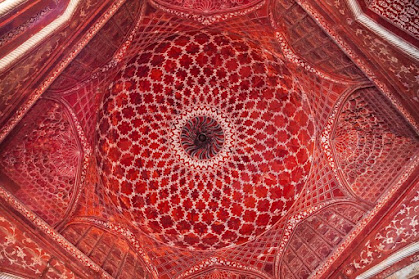Marble inlay work is among the most beautiful works of art made from marble. The Taj Mahal and other Mughal structures bear the same artwork. Only a few knowledgeable practitioners are available today because it is a traditionally protected art form.
Marble shapes are painstakingly carved and engraved during the delicate procedure. The marble slab is first inscribed with a predetermined pattern, like a floral or geometrical design. Small marble chunks in various tones are painstakingly carved to fit in these slots precisely. Then, these tiny parts are inserted into the grooves. In addition to marble, a variety of different materials can be employed. Around the turn of the 16th century, artisans in Florence, Italy, started inlaying fine precious stone. It was referred to as PIETRA DURA. Stone is pietra, and hard is dura. A traditional type of art was invented by the Italians, who also had exclusive control over it.
Pietra dura started to appear on portable, tiny objects in the 1630s as decorative panels with bird and floral designs that were ideal for table tops and cabinet fronts. Some of these quickly made their way to the Mughals in the form of gifts. Shah Jahan was the Mughal Emperor who supported Indian architecture the most out of all of them.
For him, no amount of money or time was too much to spend on building something beautiful enough to last forever and be remembered forever. One is most impelled to draw a comparison between Mughal art and pietra dura in his constructions.
The main floor and the surrounding marble railings of the Taj Mahal, as well as the cenotaphs of the Emperor and his wife, are very similar to the pietra dura form. There are many different shapes of marble table tops, including round, rectangular, oval, square, and octagonal. Kudappa Stone is used as the black base and Makrana Marble as the white base in marble table tops.
 |
Other bases may be used in accordance with the needs of the buyer. More than 30 different kinds of natural and semi-precious stones are used in marble table tops to enhance the natural and captivating appearance of the inlay designs. Dinning tables, conference tables, centre tables, side tables, coffee tables, counter tables, and other types of tables can all have inlaid marble table tops.
Tables with Marble Inlay To decorate your home, tops can be utilised for dining tables, conference tables, centre tables, side tables, coffee tables, counter tables, and more.

Good information
ReplyDeletethanks
Deletenice
ReplyDelete